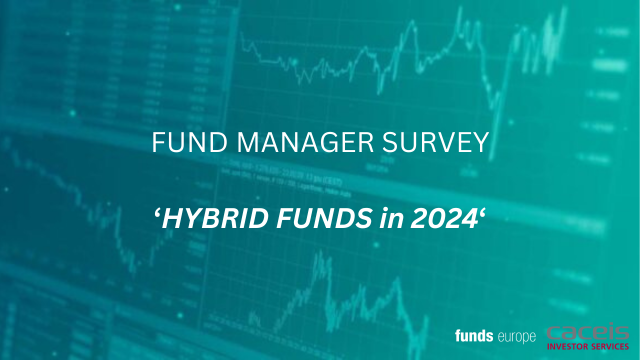EU risk-management requirements for regulated alternative investment funds mean traditional credit risk scoring methods might be inadequate in the case of complex securities, says Sergei Grechkin, chief risk officer at UFG Capital.
In the ever-evolving financial landscape, the importance of accurate credit risk assessment cannot be overstated. Traditional credit scoring models have long been the backbone of the industry, relying on linear regression and logistic regression techniques. However, as the economy grows, we find ourselves dealing with more complex securities. Due to the nature of these instruments, the traditional risk-scoring models might face difficulties in precisely determining their creditworthiness.
In 2008, for instance, credit rating agencies came under scrutiny due to their role in the global financial crisis for assigning a high credit rating to debts that later turned out to be high-risk investments. And this crisis is more relevant now when complex securities are readily available for a diverse pool of investors. Without proper methods to evaluate these instruments, investors stand a chance to make blunders in their investing decisions.
With the advent of new technologies and the availability of vast amounts of data, advanced credit risk scoring models have emerged, offering significant advantages over their classic counterparts. This article will explore the newest scoring models and highlight their benefits through real-world examples as well as consider regulatory aspects of the EU market.
Leveraging machine learning and predictive analytics
One of the most prominent advancements in credit risk scoring models is the integration of machine learning (MI) algorithms and predictive analytics. These techniques enable financial institutions to leverage complex algorithms to process vast amounts of data and extract valuable insights for credit risk assessment. By training models on historical data, MI algorithms can identify patterns and relationships that may not be apparent through traditional methods.
A prime example of the effectiveness of machine learning-based credit risk scoring models can be observed in credit underwriting software driven by AI (Artificial Intelligence). They utilise MI algorithms to analyse thousands of variables and build credit risk models that outperform traditional scoring ones. By considering non-conventional data sources such as social media activity and mobile phone usage patterns, AI-driven solutions achieve a more accurate risk assessment, allowing lenders to make better-informed decisions.
Innovating with binning algorithms
Binning algorithms, such as monotone, equal frequency, and equal width, are another innovative approach to credit risk scoring. These algorithms group individuals with similar credit profiles into distinct bins, facilitating a more granular and precise risk assessment. By dividing the data into manageable segments, financial institutions can tailor their strategies and pricing based on specific risk profiles.
Numerous financial institutions, including banks, successfully implement binning algorithms via the “Behavioral Scoring” model. It divides its customers into bins based on their spending patterns and repayment behaviours. This approach enables the bank to offer personalised credit limits, interest rates, and rewards, enhancing risk management and customer satisfaction.
Range of performance evaluation metrics
To validate credit scoring models, various performance evaluation metrics are utilised, including the Cumulative Accuracy Profile (CAP), Receiver Operating Characteristic (ROC) curve, and the Kolmogorov-Smirnov (K-S) statistic. These metrics provide insights into credit scoring models’ predictive power and discriminatory ability. Now that we considered the most advanced credit risk scoring models let’s see how they can assist alternative investment funds in the face of EU regulatory requirements.
Advanced models to assist AIFs in EU regulatory compliance
Credit risk management for European AIFs is subject to a regulatory framework based on the Alternative Investment Fund Managers Directive (AIFMD). According to the directive, European AIFMs and AIFs must implement a comprehensive risk management framework that includes identification and assessment of credit risk, risk mitigation measures, and reporting and disclosure.
EU credit risk assessment should consider various factors such as the creditworthiness of issuers, market volatility, and the credit rating of the security or private equity. In addition, the AIFMD requires European AIFMs and AIFs to comply with various disclosure and transparency requirements regarding credit risk management, including information on the methods used to measure credit risk, the credit risk exposure of the AIF, and any changes in credit risk exposure.
These requirements make it even more apparent that the traditional credit risk scoring methods might not be enough to meet them in the cases of complex securities. AI and ML-based models can provide valuable risk mitigation measures and support more efficient reporting.
Credit risk assessment trends for the next three years
As the financial landscape evolves, so do the credit risk assessment techniques. Predicting the future of credit risk assessment is challenging due to the dynamic nature of the financial industry. However, several trends will likely shape the landscape in the next three years as we see them evolving rapidly today.
Financial institutions will continue exploring alternative data sources beyond traditional credit reports. This includes leveraging data from social media, transaction history, and online behavior to assess creditworthiness accurately. In addition to that, there will be a growing demand for explainable AI techniques as MI models become more prevalent in credit risk scoring. Lenders and regulators will seek transparency in model outputs to ensure fair lending practices and regulatory compliance.
With the rise in sophisticated financial instruments, credit risk scoring models likewise will incorporate enhanced assessment algorithms. This will help identify and mitigate default events more effectively, safeguarding financial institutions and customers. Thus, advanced technologies will continue shaping the industry, and it is crucial for risk management professionals to learn how to incorporate them correctly.
Paradigm shift
The financial industry is witnessing a paradigm shift from traditional credit risk scoring models to advanced methodologies driven by MI and AI, predictive analytics, and innovative evaluation techniques. These advancements offer improved accuracy, customisation, and risk management capabilities.
As we move forward, it is essential for financial institutions and AIFMs, in particular, to embrace these emerging models to stay competitive in an ever-evolving landscape. By harnessing the power of data and technology, credit risk assessment will continue to evolve and adapt, empowering lenders to make better-informed decisions and foster financial stability.
*Sergei Grechkin, chief risk officer at UFG Capital
© 2023 funds europe





